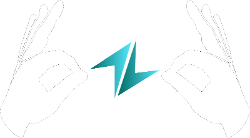It’s January 1st. You’ve written “exercise more” and “save money” on your list of resolutions… again. But what if this year’s goal connected you to thousands of new people and a vibrant culture?
Learning American Sign Language (ASL) is more than picking up a new skill, it’s a doorway into human connection, expression, and empathy. Whether you’re a student, professional, or lifelong learner, ASL can transform how you see and communicate with the world around you.

Why Learning ASL Is the Perfect New Year’s Resolution
Unlike many resolutions that fade by February, learning ASL offers visible, meaningful progress. You’re not only learning vocabulary, you’re joining a living language community that values expression, inclusion, and identity.
ASL is a visual-gestural language used widely across the U.S. and parts of Canada. It has its own grammar, syntax, and regional variations just like any spoken language.
Learning ASL fosters empathy and improves communication with Deaf and hard-of-hearing people. These skills are ones that last long after the new year glow fades.
How to Get Started Learning ASL
If you’re new to ASL, start simple. Your goal isn’t fluency overnight, but consistency.
1. Set Realistic Goals
Decide what success looks like. Maybe it’s learning the alphabet, mastering fingerspelling, or signing your first conversation.
2. Find a Structured Course
Enroll in a beginner course through your school or an online learning platform like Sign Language Blitz, where you can learn through interactive lessons designed for visual learners.
3. Practice Regularly
ASL is best learned visually and kinesthetically. Practice daily with a friend, in front of a mirror, or through ASL videos online.
4. Engage with the Deaf Community
Attend local Deaf events or join online Deaf social spaces to immerse yourself in the language and culture.
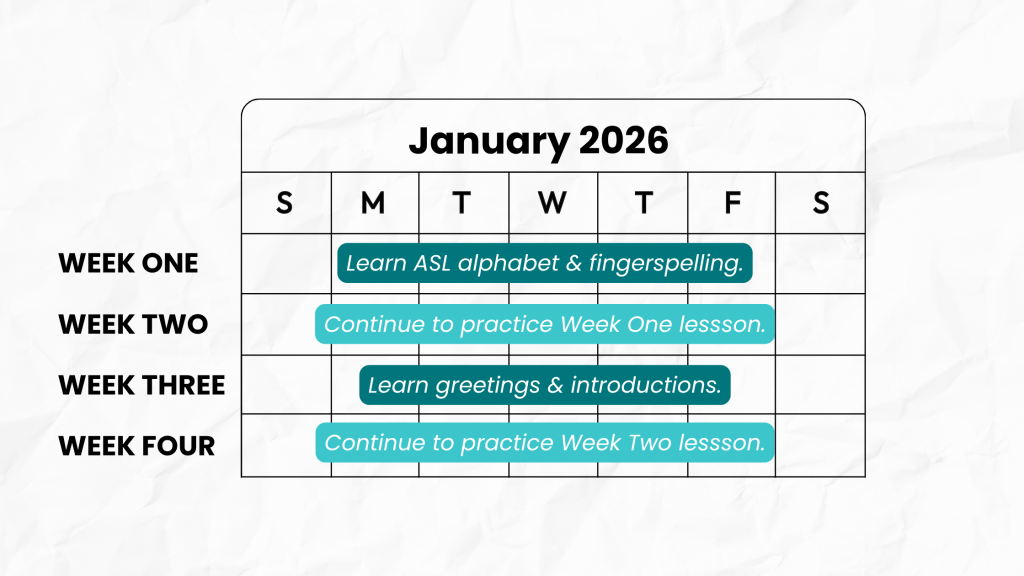

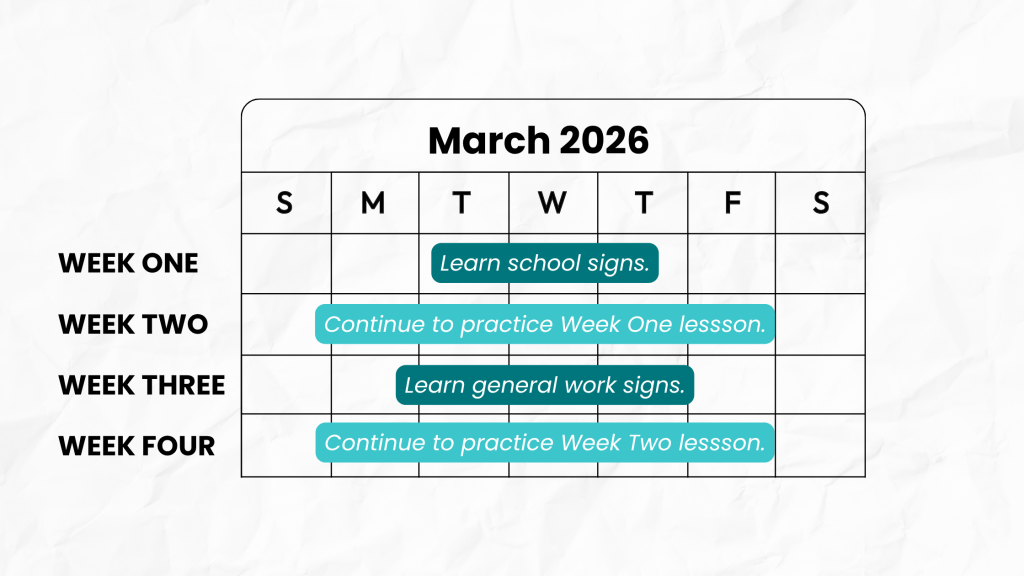
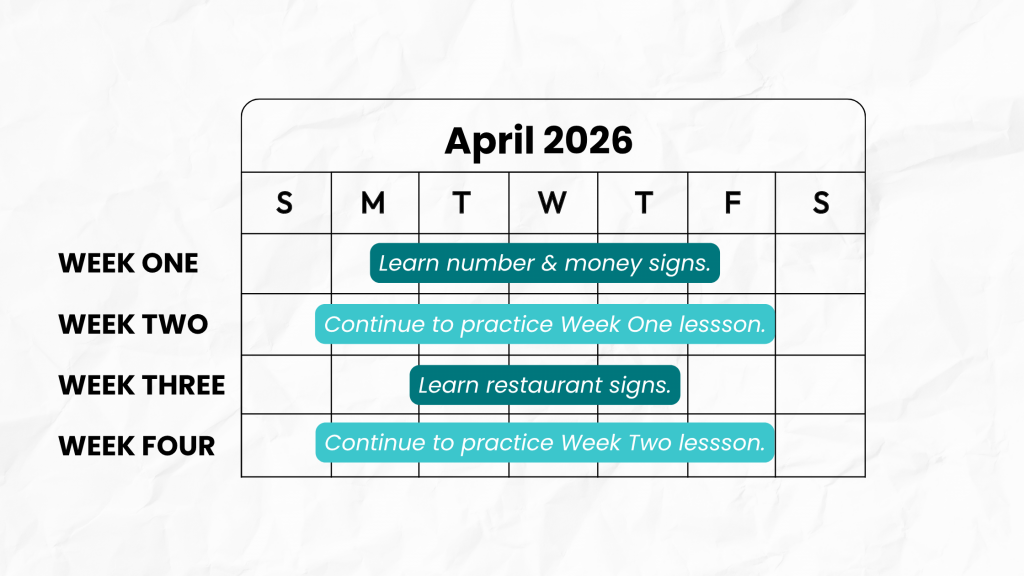
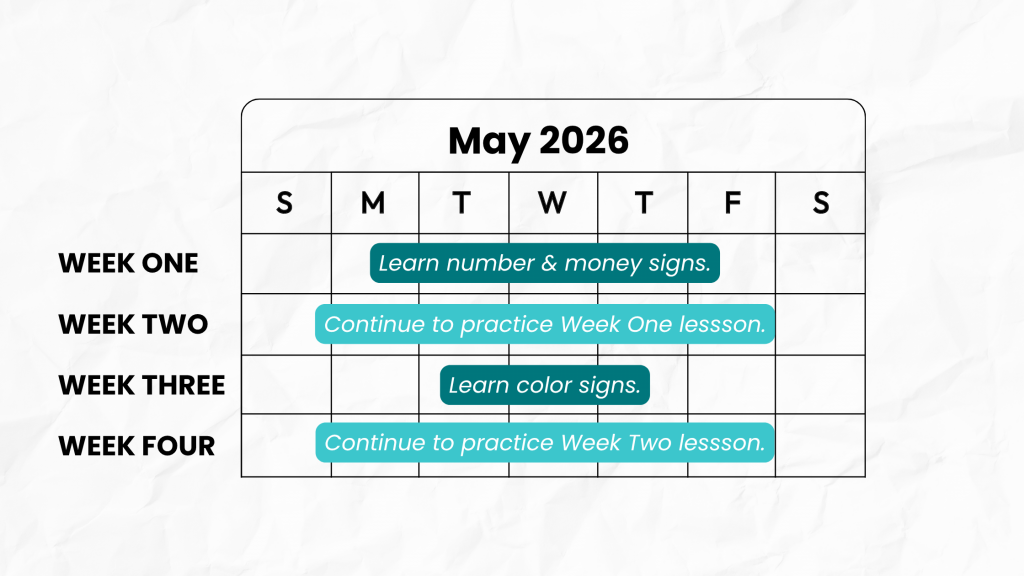
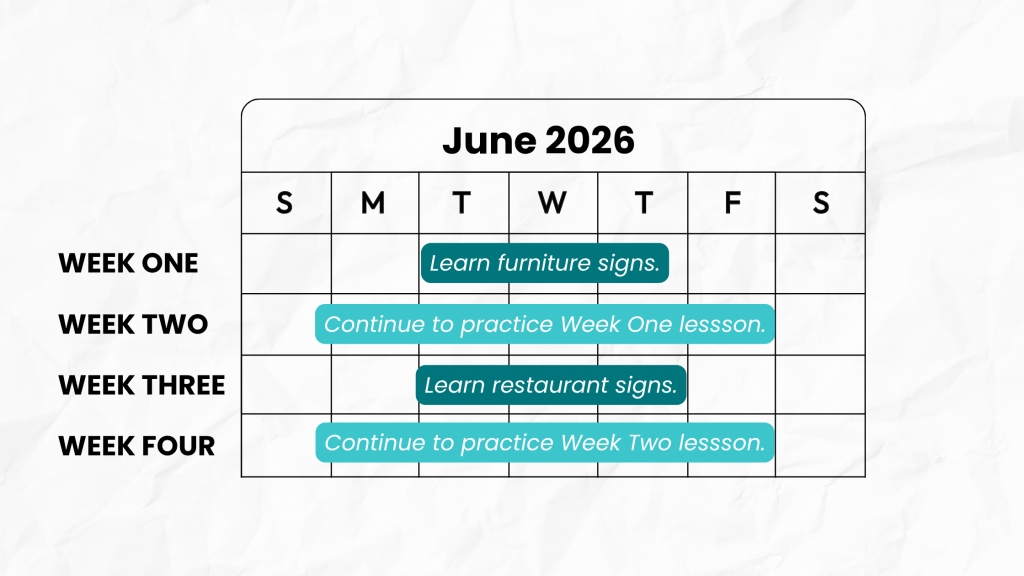
Staying Consistent with Your ASL Goals
The key to success isn’t studying harder, it’s studying smarter. Try habit stacking, where you connect ASL practice to something you already do daily (for example, signing “thank you” when you finish your morning coffee).
Use the SMART goal framework to stay on track:
Specific, Measurable, Achievable, Relevant, Time-bound.
Example: “I’ll learn five new signs every week and review them each Sunday.”
Keep a notebook or digital tracker to log signs you’ve learned. Seeing your own progress keeps motivation strong.

ASL and Deaf Culture: More Than Just a Language
ASL is deeply intertwined with Deaf culture — a rich community with its own values, art, and history. Learning the language also means understanding its people and traditions.
Respecting Deaf culture means:
- Avoiding the idea that ASL is “universal.”
- Learning Deaf etiquette — for example, maintaining eye contact and avoiding speaking without signing.
- Understanding Deaf history and advocacy movements that made today’s accessibility possible.
How Hearing Learners Can Be Better Allies
Learning ASL isn’t just about personal growth, it’s about allyship.
Here are a few ways hearing learners can show respect and support:
- Support Deaf-owned businesses and creators.
- Attend Deaf community events to learn in context.
- Advocate for accessibility in schools, workplaces, and social media.
Your effort to learn ASL sends a message: “I value communication and inclusion.”

This New Year, choose a resolution that transforms how you connect with others. Learning ASL isn’t just about signing words, it’s about joining a vibrant, expressive community and becoming part of something bigger.
Start today with Sign Language Blitz and make 2026 the year you find your voice through your hands.
Frequently Asked Questions
Q: How long does it take to learn ASL?
Most beginners can hold basic conversations in six months to a year with consistent study and immersion. Everyone learns at their own pace — the key is daily practice and real-life interaction.
Q: Is ASL hard to learn?
ASL has its own grammar and syntax, so it’s not just “English on the hands.” But many learners find it intuitive and fun once they start signing regularly and watching Deaf signers in action.
Q: What’s the best way to practice ASL every day?
Even 10–15 minutes helps! Review flashcards, watch short videos in ASL, or practice signs while cooking or walking. Consistency beats intensity every time.
Q: Why should I learn about Deaf culture too?
Language and culture go hand-in-hand. Understanding Deaf history, values, and community norms ensures you’re learning ASL in a respectful, authentic way.
